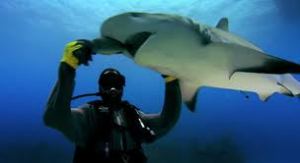Sharks
By Natalie
If I hadn’t recently seen the amazing documentary “Sharkwater” by Rob Stewart, yesterdays’ horrific fatal shark attack would have renewed my deathly fear of these creatures (thanks to ‘Jaws’). But although I absolutely feel great horror and sorrow for Adam Strange’s manner of death, and for his family, friends and those who witnessed the attack at Muriwai Beach, my new-found knowledge has diminished my fear to a healthy respect.
Sharks bring out the darker emotions in people; possibly it’s a primal fear? But I hope people don’t take this event as an excuse for a fishing frenzy of all sharks. I’m being totally selfish here. Because so far, us humans have decimated between 50-80% of the shark population, with 14 species on the brink of extinction. Obviously, removing the prime ocean predator means populations currently controlled by them would explode. Many of those species eat plankton, which produces about 70% of our oxygen. So killing sharks may ultimately have dire consequences – for us!
If you’d like to educate yourself further about these creatures, marine animals that have been around since before the dinosaurs, we have many books available and there are some great online resources too.
Some facts:
• The last possible death from a shark attack in New Zealand was in Whangamata in December 2009, when a capsized kayaker was bitten by what was thought to be a great white. A coroner ruled drowning was the cause of death and said it was unknown whether the kayaker was attacked before or after dying.
• The most recent confirmed fatal attack was in 1976, when a spearfisher was killed by what was thought to be a bronze whaler at Te Kaha in the Bay of Plenty.
• Fatal shark attacks are rare, with 15 fatal attacks since records began in 1837.
• Great white sharks are the most common killers. Other fatal attacks have been carried out by bronze whalers and mako sharks.
• Most victims were swimming, a quarter were snorkelling and the rest were either standing in shallows or surfing.
Sources: Te Ara, Department of Conservation, NZ Herald archives




Comments are closed.